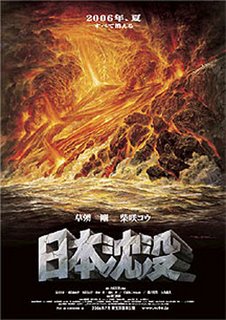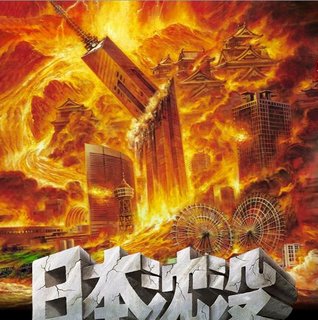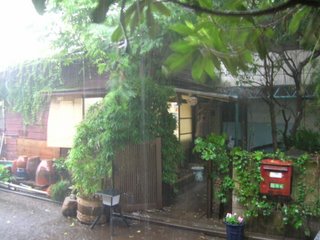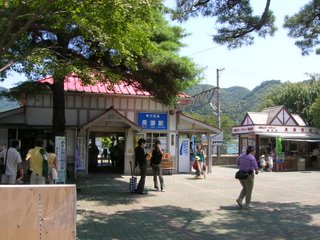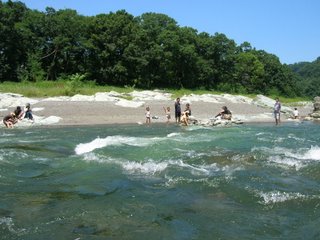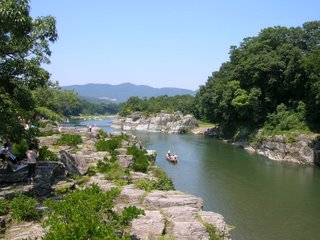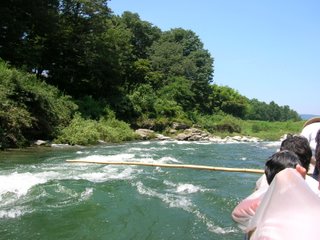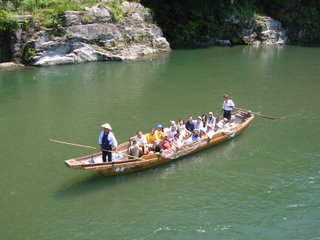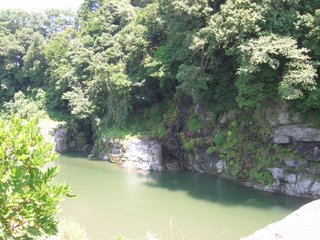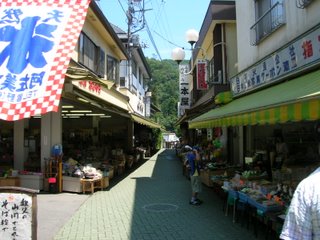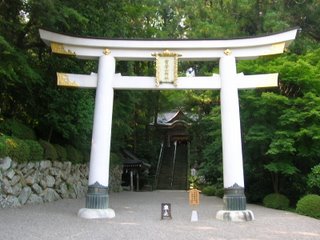Kamakura
Kamakura, located just west of Tokyo, past Yokohama, is one of the ancient capital cities of Japan. As a result, the city is filled with many old temples, shrines and other interesting sites. In this way, it is similar to Gyeongju in Korea. It is sometimes referred to as the Kyoto of eastern Japan.
Kamakura was established as Japan's capital with Emperor Minamoto in 1192, after a series of wars with formers powers from what is now knows as Kyoto and Nara. It's power lasted for over 1000 years, into the 14th century. One of the main reasons for it's fall was a lack of finances, due to money spent successfully (largely due to stormy seas) defending Japan against invading Mongol hordes. The capital was eventually re-established at Kyoto.
I visited here in late June, with my friend Nana. It is an exceptionally beautiful city, with lots to see. It's less than an hour from central Tokyo.

This bronze statue of Buddha, standing at over 13 metres tall, is the most famous site in Kamakura. It's the second largest statue of Buddha in Japan, and was originally built in 1252. It was housed inside a temple. Unfortunately, and amazingly, the temple was destroyed in a tsunami near the end of the 1400s. This was incredible to me, because it really isn't that close to the ocean. It is probably a kilometre or two away, from what I could tell. It's hard to imagine how powerful the ocean can be, even after watching the videos of the December 2004 tsunami in SE Asia.
In the back of the statue, there is a door where you can enter the statue from. It's completely hollow, and there is a charge of 20 yen to go inside. Inside the Buddha, it was extremely hot. What was interesting was that you could see how the statue was re-enforced with plaster and other materials over the years.
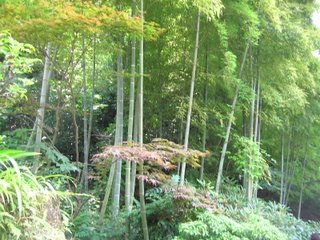
Much of this area is mountain, as we are beginning to get into the foothills of the mountains that are home to Mt. Fuji. The population here isn't nearly as dense as it is in the Tokyo metro, which is nice. There are more hiking areas, as well as more insects to go with it. ;) It is a brilliant area. The bamboo trees were expecially interesting to me.
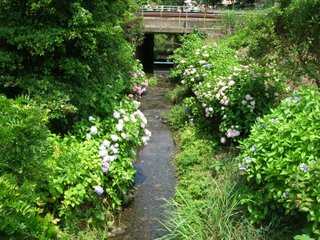
Here is a stream near one of the many temples in the area. A hallmark of many Buddhist temples is that they are often built near a stream or river.

These drainage ditches are even interesting to me, as they are much different than what I'm used to seeing in Canada.

These temple grounds were quite large and impressive, although they weren't as large as somewhere like Tongdosa in Korea.

One of the enterence gates.

A traditional grass building. Most impressive!

The cemetaries were a sight to behold as well, with moss growing on the old stone graves. They had quite the mystical aura about them.
Most graves in Japan, according to Nana, contain the bones of the deceased. They are generally cremated until only their bones are left, and then buried.

This staircase was in the cemetary, and I thought it looked very cool. So, I took a picture.

This is a common site around Buddhist cemetaries; an idol which is often prayed to and has offerings (booze, food, flowers, etc.) left in front of it.
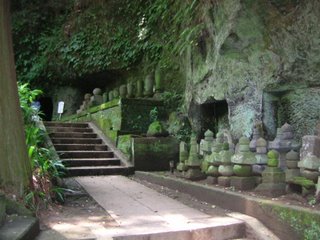
I think those are small grave markers on the side of that wall. The lush vegetation of the area has turned much of the rock and graves a green colour.

A few statues of
kami (gods). I am not exactly sure of their purpose as idols.

Another statue of some sort of
kami.
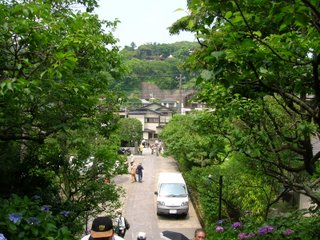
Walking between the different temples sometimes gave us nice views of the town below.
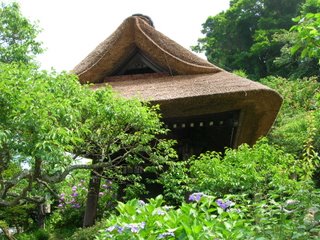
Here is another picture of a grass-roofed house. I cannot remember if this is the same house as before.
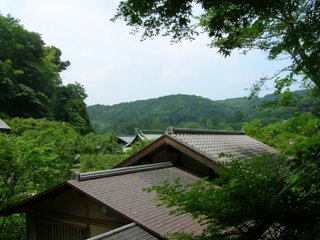
I had to lean over a small cliff to take this shot... but what a brilliant view this turned out to be!

I thought this rock face looked impressive.
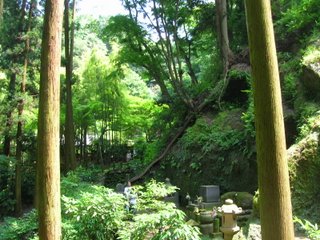
Everything, such as this cemetary, seems to be built on the side of a hill. It almost reminds me of Boot Hill cemetary in Sturgis, South Dakota, USA. Okay, not really...

Between some of the temples, we managed to get some hiking in. We walked for about an hour in the forest, until we came out.
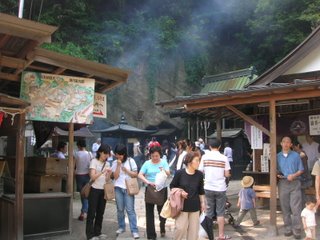
Here is an interesting area. We walked through a cave to get here, and came out to a smoke-filled shrine area. There were shine shops, selling incense, candles and the lick, a bunch of small, idol-filled, shines where praying could be done, and a cave with wells and fountains where you would wash your money.
There were also some restaurants in the area, which we took advantage of.
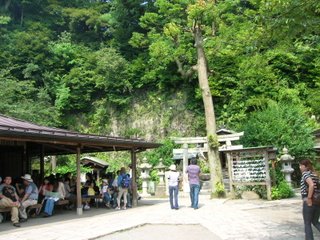
The same area.

Some of the shops, selling shine goods.

This lead to a cave. I forget if it was the one that we came in from, or if it is the money washing cave.

Here is the area to wash your money at. People would put their bills in a small basket, pour water on them, and then dry the money with a candle. I guess it is supposed to make the money 'pure'...

From the money cave area, we found our way to the large Buddha statue.

It was an imposing site.

Someone offered to take our picture. Nana is on the left. :P

A cool picture of a pagota nested amounst some trees.

Next, we went to a large shrine that is famous for it's flower gardens. This flowers were cool to see, as they floated on the water.

Aren't Japanese gardens beautiful when they are done up like this?
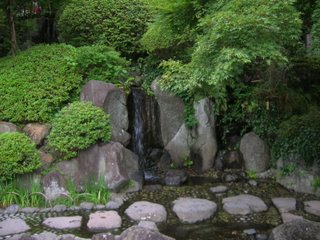
In English, this is known as a 'waterfall.' Okay class, repeat after me...

Here, you could buy a small statue of Buddha, and place it here... just a few metres from where you bought it.
To each their own I guess. I don't really get it.
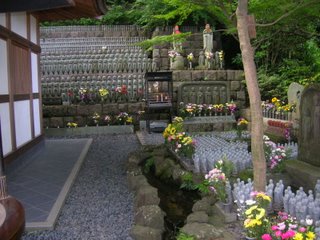
Well, I guess it does look kind of cool; in a million Buddha statues sort of way.

One of many, many, many, many, many temple buildings in the area. There were a ton of people lined up here to see this season's flowers in bloom.
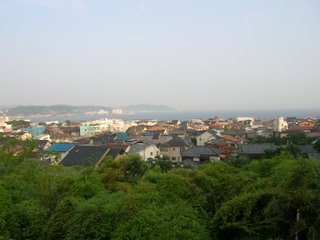
A great shot of Kamakura, with the Pacific Ocean in the distance.

Okay, back the the flower garden!
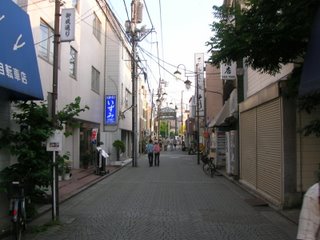
Here is a side street in Kamakura. As in much of Japan, it is extremely clean. Even the areas where traveller's never really go to are fairly well kept up in this country. Of course, they don't always look this good. Fukuoka is still the cleanest city that I've been to... or maybe I am just jaded.

Here is an unfamiliar sight for me; a rickshaw. These were apparently quite popular here in the past, but are now mainly just used in tourist areas.

A ttori gate leading to the temple, which was under renovation, in the background.

I really have a thing for these types of bridges. I think they look awesome.

There were many stairs to climb, before reaching this temple.
Hopefully I'll update about my life recently. I've been fairly busy lately. As you may have gathered from my last few posts, I was becoming more and more disenchated with my job. Well, it all came to a head and I quit. I will be working at Shane English School, in Tokyo, starting in September. The best part is that it has 35 days of holiday per year, mostly in blocks of a week or more. So, there will be enough chances for trips here and there. My work will be more like what I was doing in Korea; with smaller classes and 'normal' work days of 8-9 hours (as opposed to 12-14, as I was doing!!!!!). I have already finished most of my training this month. I left my old apartment, and am now living in a guest house until I get my own apartment. That will probably be in October, I think. I want to wait until things settle down a bit before putting down key money for a new place.
I will be heading to Canada, to see my family and some old friends, next week. I'll be there for just under two weeks. When I come back, I will be ready to start my new job. I am also thinking of buying a scooter (that will definitely make some things easier!). I'm looking at 50cc models right now, because I can ride one with only a regular driver's license. For anything larger than 50cc, I need a motorcycle license. Maybe I will challenge the test sometime in the future.
